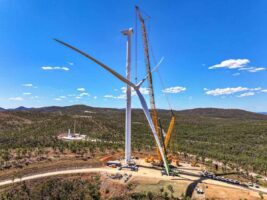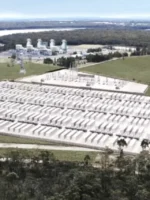 The Clean Energy Finance Corporation (CEFC) has announced an extra $7 million dollars for increased energy efficiency in a “build-to-rent” apartments venture by property developer Mirvac.
The Clean Energy Finance Corporation (CEFC) has announced an extra $7 million dollars for increased energy efficiency in a “build-to-rent” apartments venture by property developer Mirvac.
This adds to the $68 million already announced for the $1.8 billion project, which is building apartments at a minimum of 7.5 stars on the Nationwide House Energy Rating Scheme (NatHERS).
A push to make more rental properties that are more energy efficient, and therefore more affordable and less carbon intensive, addresses a number of major policy fronts for the federal government in one go.
Mirvac has 2,200 apartments currently available or being built in Brisbane, Melbourne and Sydney. Built-to-rent housing stock creates large buildings of only rentable apartments. Renters have the option of longer-term leases, pets, no security deposit, and the ability to decorate or paint their homes.
However, it’s worth noting that these are not low-income housing. When asked, LIV Mirvac told RenewEconomy that a one-bedroom apartment is rented for $650 a week.
“Improving energy-efficiency in these apartments is crucial in cutting power bills over the long-term for renters,” says Chris Bowen, Minster for Climate Change and Energy.
The average standard of energy efficiency in Australia’s existing housing stock is woeful. Last year, Australia placed 18 out of 25 on the International Energy Efficiency Scorecard by the American Council for an Energy Efficient Economy, behind countries such as India, the US, and Mexico.
In 2003 the average Australian home rated at 1.8 stars. A rating that low means you find yourself uncomfortable all year round – hot in the summer and cold in the winter. At the other end of the scale, a 10-star home is built to be comfortable with no air conditioning or heating required.
Recently, the minimum requirement for new houses and apartments in Australia was increased from 6 to 7 stars. These homes will still require some heating and cooling to keep comfortable but much less than a lower star rating.
The investment from the CEFC will go a small step above the new 7-star minimum requirement, upping the rating to 7.5 stars at a minimum, and net zero emissions in operations.
A 7.5-star home is on average 77% more efficient to heat and cool than a two-star home. This has the added benefit of lowering power bills.
“Renew has found that building 7-star homes with solar and no gas can cut bills by over $1000 a year,” Renew CEO Fiona Gray said last year.
Building homes geared for energy efficiency also promises to lock in a big climate win.
A report published earlier this year from the Property Council of Australia and the Green Building Council of Australia found that adding more energy efficiency measures would deliver 64 MT of avoided CO2 equivalent emissions by 2050, and $20 billion in energy bill savings for businesses and households.
“The build to rent sector is an emerging asset class in Australia with the potential for significant growth, as well as considerable scope to make a meaningful impact on the decarbonisation of the broader residential property sector,” says CEFC Head of Property, Michael Di Russo.
“We’re pleased to help extend the benefits of Mirvac’s build to rent developments to increase the supply of energy efficient housing, with each new development project targeting a minimum average of 7.5-star NatHERS rating and net zero carbon emissions in operations.”
Currently the CEFC is also investing into ‘green’ home mortgages, providing a 0.18 per cent discount for mortgages on new homes built to the Green Building Council of Australia’s Green Star Home standard, or existing homes renovated and retrofitted to achieve a Nationwide House Energy Rating Scheme (NatHERS) rating of 7 stars.










